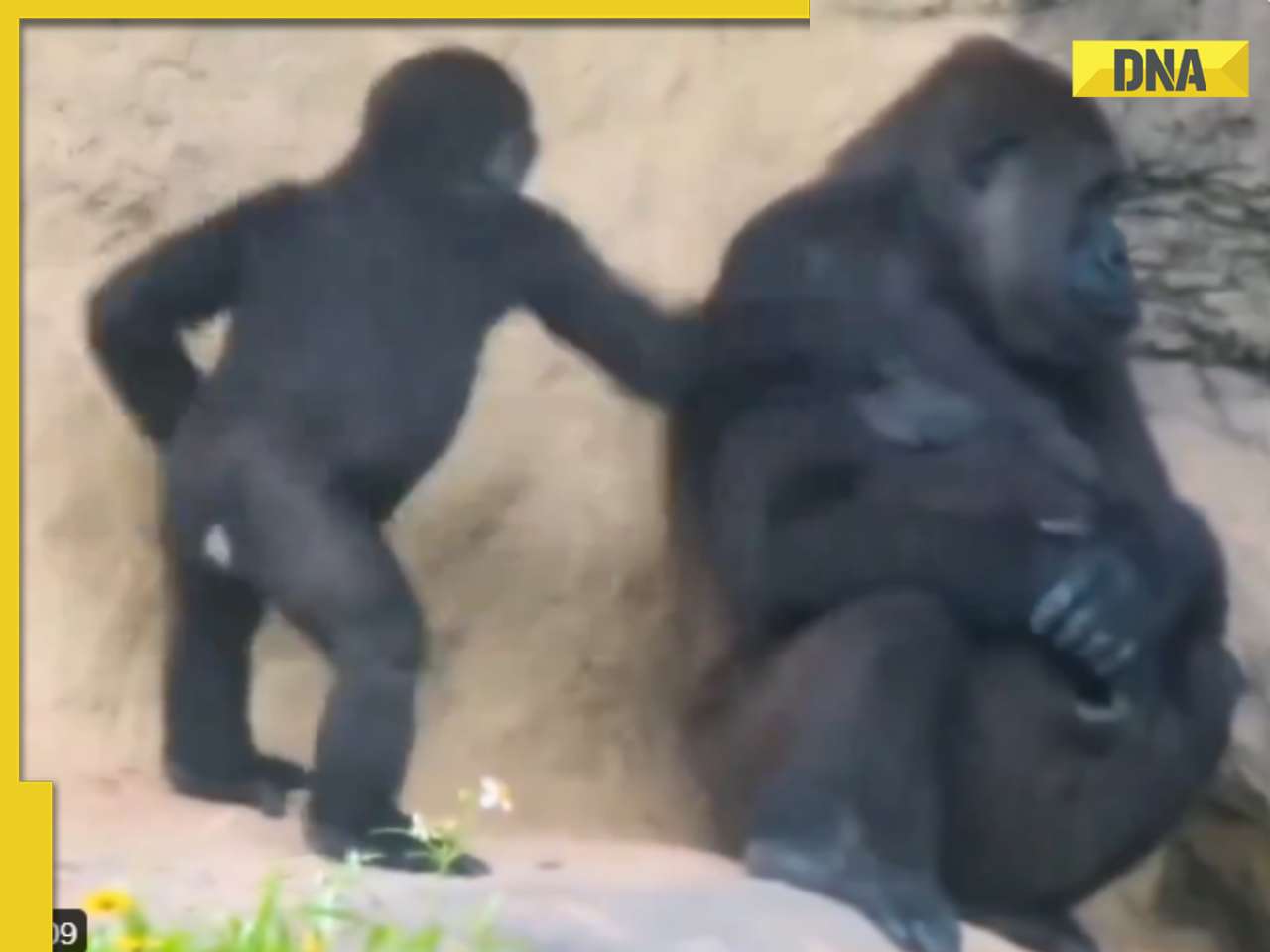Massive floods shut down the centre of Australia's third-largest city, sent thousands fleeing from their homes and sparked panic buying of food on Wednesday as rescuers searched desperately for nearly 70 people missing in floodwaters.
Massive floods shut down the centre of Australia's third-largest city, sent thousands fleeing from their homes and sparked panic buying of food on Wednesday as rescuers searched desperately for nearly 70 people missing in floodwaters.
The biggest floods in a century have so far killed 16 people since starting their march across the northern mining state of Queensland last month, crippling the coking coal industry, destroying infrastructure, putting a brake on the economy and sending the local currency to four-week lows.
The flood surge is expected to peak in Brisbane, a riverine city of two million people, before sunrise on Thursday and last for days. However, the peak will arrive within the next few hours in Ipswich, a satellite town to the west.
"The water is rising and swallowing up the city. It's really heartbreaking," said Ipswich Mayor Paul Pisasale.
Brisbane residents on Wednesday pushed food-laden shopping carts through drowned streets, others waded in shoulder-high water to rescue possessions, while boats and pontoons were ripped from moorings in the Brisbane River and smashed into bridges as the muddy brown tide gathered strength.
At flooded intersections people paddled surfboards through floodwaters, balancing their possessions on the deck of the boards, while boats ferried evacuees to dry ground.
"I am feeling a sense of horror and awe at the power of the river. Sadly in coming hours we will see bits of people's homes float down the river," Brisbane mayor Campbell Newman said, warning the torrent could take three to four days to subside.
Rescue crews took advantage of some rare sunshine to look for 67 people still missing from tsunami-like flash floods that tore through townships west of the city this week.
"We can take no comfort from that blue sky," Queensland state premier Anna Bligh told reporters, predicting almost 20,000 homes could be flooded at the river's peak in what she called Queensland's worst natural disaster.
"The water and the rain have already done their damage. This is a deeply serious natural disaster."
The worsening floods are forcing economists to raise estimates of the economic impact, with one central bank board member on Wednesday saying the disaster could cut 1 percent off growth -- equal to almost $13 billion, double the previous highest estimate.
The Australian dollar sank to a fresh four-week low of $0.9803 on the comments from Warwick McKibbin, an academic and a member of the central bank's policymaking board.
Treasurer Wayne Swan in November forecast GDP growth of 3.25% in fiscal 2010-11, up from a 3.0% projection, but said spending would be cut to ensure a surplus of A$3.1 billion or 0.2% of GDP in 201213.
Food prices are surging around the country as the floods ruin Queensland crops and distribution networks. Prices for tomatoes have leapt about 200% in two weeks, while beef is up 11 percent and wheat has risen 4% in four months.
In Brisbane, thousands of homes and businesses were deserted as swirling floodwaters rose in and around the city, forcing residents to flee with few possessions to higher ground and to evacuation centres crowded with more than 3,500 people.
Some of the scenes in the city were surreal, with early-morning joggers trying to carry on as normal, even though parts of their routes were underwater. Others were distraught.
"This is my whole life, everything is gone. I never thought it would get this bad," said Kim Hung, manager of the Salt 'n' Pepper catering business, as two friends floated a coffee machine toward higher ground.
Raw sewage began spilling into the river and creeks, prompting authorities to warn of a heightened disease risk as damaged water treatment works polluted the floodwaters.
Bligh said she expected about 19,700 homes to be flooded at the river's peak, affecting up to 45,000 people. The military is running relief flights with helicopters and C-130 transports.
Dams built to protect Brisbane and outlying towns were spilling floodwaters into swollen rivers. The Port of Brisbane was closed, shutting down Australia's third-busiest container port and a 5-million-tonnes-a-year coal-loading facility.
Australia is the world's biggest exporter of coking coal, which is used in steel manufacturing and accounts for more than half of global exports, and is also the second-biggest exporter of thermal coal used for power generation.
Power company Energex shut power to some low-lying areas of Brisbane, including parts of the financial district, for fear that live power lines could electrify floodwaters. Some 78,000 homes in the southeast of Queensland were without electricity.
Queensland Premier Bligh advised people not to leave their homes if they are safe and to conserve water in case fresh supplies were interrupted. "As crazy as it sounds, now is not a time to be wasting water," she said.
Prime Minister Julia Gillard arrived in Brisbane to inspect the devastation and said she was deeply concerned about the impact on jobs and livelihoods.
"I have been shocked. I think we've all been shocked by the images of that wall of water just wreaking such devastation. The dimensions of it are truly mind-boggling," Gillard said.
The floods have been blamed on a La Nina weather pattern in the Pacific, with Australia recording its third-wettest year on record in 2010, with two wet-season months to go. Weather officials are also forecasting an above-average cyclone season.
As the Queensland floods and rains move south, major rivers in New South Wales state have begun flooding or threatening to break their banks, forcing rural evacuations. In southeast Victoria state, heavy rain caused flash flooding and landslides, prompting fears a lake near Horsham could break its banks.
However, underlining the country's summer of extremes, authorities in Western Australia battled huge bushfires.
![submenu-img]() Big update on Pakistan's first-ever Moon mission and it has this China connection...
Big update on Pakistan's first-ever Moon mission and it has this China connection...![submenu-img]() 2024 Maruti Suzuki Swift officially teased ahead of launch, bookings open at price of Rs…
2024 Maruti Suzuki Swift officially teased ahead of launch, bookings open at price of Rs…![submenu-img]() 'Kyun bhai kyun?': Sheezan Khan slams actors in Sanjay Leela Bhansali's Heeramandi, says 'nobody could...'
'Kyun bhai kyun?': Sheezan Khan slams actors in Sanjay Leela Bhansali's Heeramandi, says 'nobody could...'![submenu-img]() Meet Jai Anmol, his father had net worth of over Rs 183000 crore, he is Mukesh Ambani’s…
Meet Jai Anmol, his father had net worth of over Rs 183000 crore, he is Mukesh Ambani’s…![submenu-img]() Shooting victim in California not gangster Goldy Brar, accused of Sidhu Moosewala’s murder, confirm US police
Shooting victim in California not gangster Goldy Brar, accused of Sidhu Moosewala’s murder, confirm US police![submenu-img]() DNA Verified: Is CAA an anti-Muslim law? Centre terms news report as 'misleading'
DNA Verified: Is CAA an anti-Muslim law? Centre terms news report as 'misleading'![submenu-img]() DNA Verified: Lok Sabha Elections 2024 to be held on April 19? Know truth behind viral message
DNA Verified: Lok Sabha Elections 2024 to be held on April 19? Know truth behind viral message![submenu-img]() DNA Verified: Modi govt giving students free laptops under 'One Student One Laptop' scheme? Know truth here
DNA Verified: Modi govt giving students free laptops under 'One Student One Laptop' scheme? Know truth here![submenu-img]() DNA Verified: Shah Rukh Khan denies reports of his role in release of India's naval officers from Qatar
DNA Verified: Shah Rukh Khan denies reports of his role in release of India's naval officers from Qatar![submenu-img]() DNA Verified: Is govt providing Rs 1.6 lakh benefit to girls under PM Ladli Laxmi Yojana? Know truth
DNA Verified: Is govt providing Rs 1.6 lakh benefit to girls under PM Ladli Laxmi Yojana? Know truth![submenu-img]() Remember Heyy Babyy's cute 'Angel' Juanna Sanghvi? 20 year-old looks unrecognisable now, fans say 'her comeback will...'
Remember Heyy Babyy's cute 'Angel' Juanna Sanghvi? 20 year-old looks unrecognisable now, fans say 'her comeback will...'![submenu-img]() In pics: Arti Singh stuns in red lehenga as she ties the knot with beau Dipak Chauhan in dreamy wedding
In pics: Arti Singh stuns in red lehenga as she ties the knot with beau Dipak Chauhan in dreamy wedding![submenu-img]() Actors who died due to cosmetic surgeries
Actors who died due to cosmetic surgeries![submenu-img]() See inside pics: Malayalam star Aparna Das' dreamy wedding with Manjummel Boys actor Deepak Parambol
See inside pics: Malayalam star Aparna Das' dreamy wedding with Manjummel Boys actor Deepak Parambol ![submenu-img]() In pics: Salman Khan, Alia Bhatt, Rekha, Neetu Kapoor attend grand premiere of Sanjay Leela Bhansali's Heeramandi
In pics: Salman Khan, Alia Bhatt, Rekha, Neetu Kapoor attend grand premiere of Sanjay Leela Bhansali's Heeramandi![submenu-img]() DNA Explainer: Why Harvey Weinstein's rape conviction was overturned, will beleaguered Hollywood mogul get out of jail?
DNA Explainer: Why Harvey Weinstein's rape conviction was overturned, will beleaguered Hollywood mogul get out of jail?![submenu-img]() What is inheritance tax?
What is inheritance tax?![submenu-img]() DNA Explainer: What is cloud seeding which is blamed for wreaking havoc in Dubai?
DNA Explainer: What is cloud seeding which is blamed for wreaking havoc in Dubai?![submenu-img]() DNA Explainer: What is Israel's Arrow-3 defence system used to intercept Iran's missile attack?
DNA Explainer: What is Israel's Arrow-3 defence system used to intercept Iran's missile attack?![submenu-img]() DNA Explainer: How Iranian projectiles failed to breach iron-clad Israeli air defence
DNA Explainer: How Iranian projectiles failed to breach iron-clad Israeli air defence![submenu-img]() 'Kyun bhai kyun?': Sheezan Khan slams actors in Sanjay Leela Bhansali's Heeramandi, says 'nobody could...'
'Kyun bhai kyun?': Sheezan Khan slams actors in Sanjay Leela Bhansali's Heeramandi, says 'nobody could...'![submenu-img]() Meet actress who once competed with Aishwarya Rai on her mother's insistence, became single mother at 24, she is now..
Meet actress who once competed with Aishwarya Rai on her mother's insistence, became single mother at 24, she is now..![submenu-img]() Makarand Deshpande says his scenes were cut in SS Rajamouli’s RRR: ‘It became difficult for…’
Makarand Deshpande says his scenes were cut in SS Rajamouli’s RRR: ‘It became difficult for…’![submenu-img]() Meet 70s' most daring actress, who created controversy with nude scenes, was rumoured to be dating Ratan Tata, is now...
Meet 70s' most daring actress, who created controversy with nude scenes, was rumoured to be dating Ratan Tata, is now...![submenu-img]() Meet superstar’s sister, who debuted at 57, worked with SRK, Akshay, Ajay Devgn; her films earned over Rs 1600 crore
Meet superstar’s sister, who debuted at 57, worked with SRK, Akshay, Ajay Devgn; her films earned over Rs 1600 crore![submenu-img]() IPL 2024: Spinners dominate as Punjab Kings beat Chennai Super Kings by 7 wickets
IPL 2024: Spinners dominate as Punjab Kings beat Chennai Super Kings by 7 wickets![submenu-img]() Australia T20 World Cup 2024 squad: Mitchell Marsh named captain, Steve Smith misses out, check full list here
Australia T20 World Cup 2024 squad: Mitchell Marsh named captain, Steve Smith misses out, check full list here![submenu-img]() SRH vs RR, IPL 2024: Predicted playing XI, live streaming details, weather and pitch report
SRH vs RR, IPL 2024: Predicted playing XI, live streaming details, weather and pitch report![submenu-img]() SRH vs RR IPL 2024 Dream11 prediction: Fantasy cricket tips for Sunrisers Hyderabad vs Rajasthan Royals
SRH vs RR IPL 2024 Dream11 prediction: Fantasy cricket tips for Sunrisers Hyderabad vs Rajasthan Royals ![submenu-img]() IPL 2024: Marcus Stoinis, Mohsin Khan power Lucknow Super Giants to 4-wicket win over Mumbai Indians
IPL 2024: Marcus Stoinis, Mohsin Khan power Lucknow Super Giants to 4-wicket win over Mumbai Indians![submenu-img]() Viral video: Man's 'peek-a-boo' moment with tiger sends shockwaves online, watch
Viral video: Man's 'peek-a-boo' moment with tiger sends shockwaves online, watch![submenu-img]() Viral video: Desi woman's sizzling dance to Jacqueline Fernandez’s ‘Yimmy Yimmy’ burns internet, watch
Viral video: Desi woman's sizzling dance to Jacqueline Fernandez’s ‘Yimmy Yimmy’ burns internet, watch![submenu-img]() Viral video: Men turn car into mobile swimming pool, internet reacts
Viral video: Men turn car into mobile swimming pool, internet reacts![submenu-img]() Meet Youtuber Dhruv Rathee's wife Julie, know viral claims about her and how did the two meet
Meet Youtuber Dhruv Rathee's wife Julie, know viral claims about her and how did the two meet![submenu-img]() Viral video of baby gorilla throwing tantrum in front of mother will cure your midweek blues, watch
Viral video of baby gorilla throwing tantrum in front of mother will cure your midweek blues, watch


















































)
)
)
)
)
)